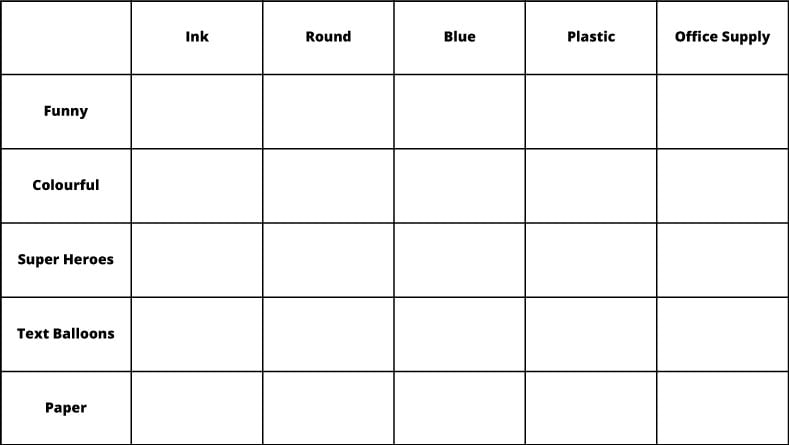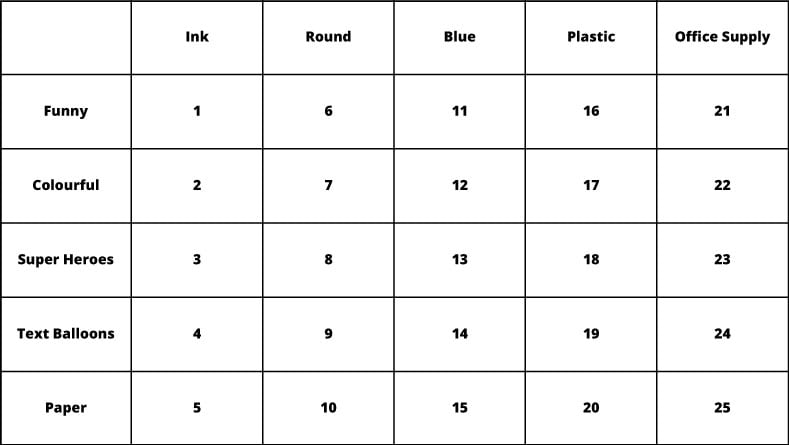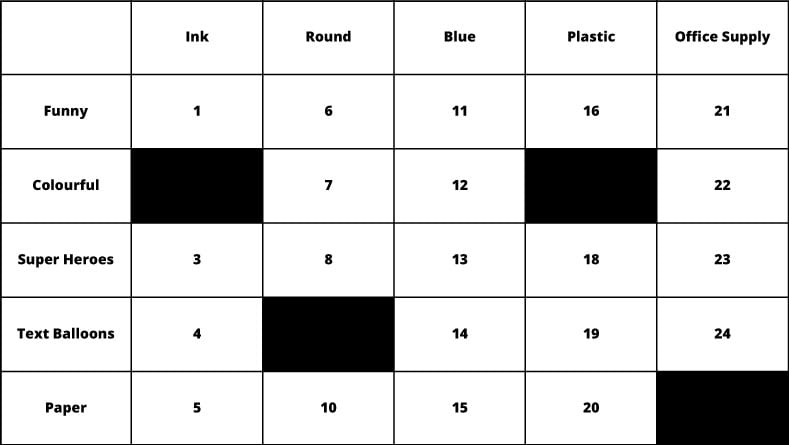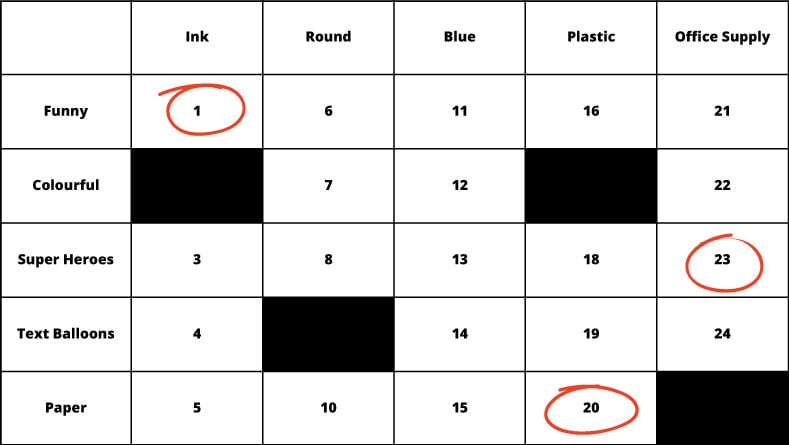How to HIT your market with new products
Using the HIT grid to develop new products and services
Perhaps business is slow and your company really needs a new product or service to get back on its feet. Or maybe business is going great, but you want to beat the competition to the next big thing on the market. In both cases, you need ideas for new products or services. The ‘Heuristic Ideation Technique’ (or HIT) is a technique that can help you generate many promising ideas in a very short period of time.
Every company needs to innovate. But knowing you have to come up with new product-ideas and actually thinking of the next big hit in your industry are two very different things. What you need is a method.
Luckily there are quite some ‘thinking techniques’ to choose from, that can help you to generate new ideas in a structured way. In this post, I’d like to point out a simple way to quickly and systematically generate loads of new ideas.
Using HIT
The Heuristic Ideation Technique (HIT) is a way of generating new product-ideas that was developed by marketing expert Edward Tauber. The technique allows you to quickly explore many combinations of attributes and enables you to systematically search for new product-ideas.
The technique uses a grid with ‘heuristics’ (or rules of thumb) to quickly explore possibilities for new products. This may sound technical and complicated, but it’s really not. I’ll illustrate how the technique works with an example.
Say you are in the pen-business. Your main product is a cheap blue plastic ballpoint pen. Business is tough as a price war is raging between pen-manufacturers. You need something new. A product that stands out in the market. Let’s see how the HIT grid can help you find new product-ideas:
STEP 1 – make a grid
The first thing you need to do is drawing a grid. This can easily be done in excel. Once you’ve created your grid, you choose two existing products or services. If you can, make sure that one of these products/services is something you already offer. This way you can build on your existing market.
Write the attributes of one of the products or services on the horizontal axis of the grid and the attributes of the other product/service on the vertical one. What are some things that are generally associated with your type of product?
Example:
As we just determined you are in the pen business, it makes sense to pick a ballpoint pen as your first product in the grid. The second product you choose can be anything, but picking a product that has little to do with the first product tends to result in more original ideas. In this example, let’s pick a comic book.
In the grid, you list attributes of each product. For the ballpoint pen, you could list things like: ink, round, plastic, office supply etc. For the comic book, you could write down: paper, text balloons, superheroes, colourful etc.

STEP 2 – assign a number to each possible combination
Now number all the spaces in the grid.

STEP 3 – cross out existing combinations
Every square of the grid resembles a combination of two attributes.
As combinations that already exist are not very interesting, start by crossing out these boring squares. It’s up to you to decide what combinations are too obvious to keep. If a combination already exists and doesn’t inspire you, scrap it.
In our example grid, combinations like colourful-ink, round-text balloons and office supply-paper are rather obvious combinations. However, if one of these combinations inspires you (if it makes you think of entirely new products), by all means keep it!

STEP 4 – circle combinations that seem promising
Now take a look at all the different combinations. What combinations look promising to you? Combinations that seem odd are often the most inspiring.

STEP 5 – write down brief statements
For each circled combination, quickly explain in a few words why it is interesting.
For example: ‘super heroes-office supply’ can be interesting because it suggests that you can capitalise on the latest superhero film, ‘funny-ink’ could be something that appeals to children and ‘plastic-paper’ could lead you to think of different materials to write on.
STEP 6 – ideate
One-by-one take a closer look at each circled combination. What possible new products could you make, based on this new combination?
- Funny-ink could make you think of invisible ink (for secret letters), ink that smells funny (perfumed …or really nasty, to be used for pranks) or ink that changes colour after a while. All of which could be quite popular among children.
- Super heroes-office supply might lead to a pen shaped like the incredible Hulk or Iron Man (again targeting kids …or geeks).
- Plastic-paper might make you think about a pen that can write on plastic, glass or any other unusual material (instead of paper) or even a product that is complementary to your existing assortment of pens; a notebook with plastic pages that can be used in the bath or the pool for instance.
As you can see, using HIT isn’t very complicated. The technique lets you explore many possible combinations in a very short period of time. It can lead you to very creative ideas.
What products or services can you come up with to give your business a boost?





